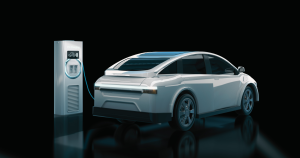How are 2023 NEC rules changing EV charger installation requirements?
Overview
As electric vehicles become more popular, the need for electric charging infrastructure has increased significantly. Gas stations, grocery stores, and even hotels are installing electric vehicle charging equipment. Some confusion has arose regarding whether or not charging or transfer equipment for electric vehicles needs to be listed. The 2023 addresses this confusion in the xxx.06 section (which has become the section that addresses listing requirements of equipment in many NEC articles) of Article 625. This change eliminates any confusion by plainly stating the listing requirements, and will assist in simplifying the equipment selection process for electrical professionals.
regarding whether or not charging or transfer equipment for electric vehicles needs to be listed. The 2023 addresses this confusion in the xxx.06 section (which has become the section that addresses listing requirements of equipment in many NEC articles) of Article 625. This change eliminates any confusion by plainly stating the listing requirements, and will assist in simplifying the equipment selection process for electrical professionals.
Applying the 2023 Code
| To address confusion regarding the listing requirements for electric vehicle power transfer equipment, the 2023 NEC has created a clear set of rules in Section 625.6. With the widespread influx of electric vehicle charge infrastructure, it is important that the electrical professional be able to quickly and efficiently determine whether a piece of charging equipment is suitable for installation. Section 625.6 now clearly states that “Electric vehicle power transfer system equipment for the purposes of charging, power export, or bidirectional current flow shall be listed.” This means that any equipment used to charge electric vehicles will have to be listed by a nationally recognized testing laboratory. When selecting a piece of charging equipment, it will be crucial to check the listing status of said equipment. Inexpensive import equipment may not meet the requirements of the NEC, or simply may not be listed, and therefore cannot be used. |
What’s New for the 2023 NEC?
2020 NEC
In the 2020 NEC Section 625.6 did not exist
2023 NEC
In the 2023 NEC Section 625.6 now reads as follows:
| 625.6 Listed.
Electric vehicle power transfer system equipment for the purposes of charging, power export, or bidirectional current flow shall be listed. |
